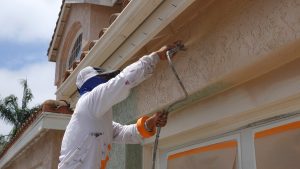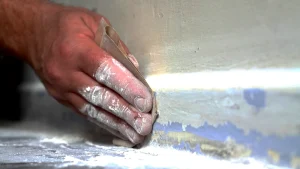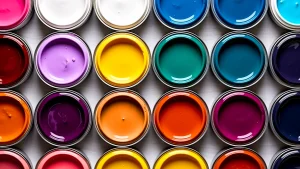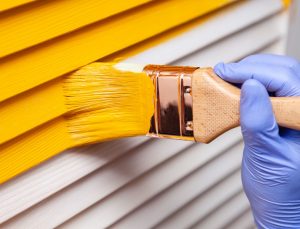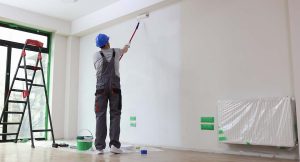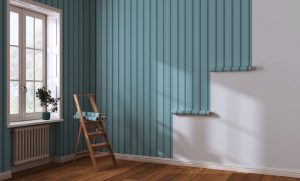Surface preparation is the process of preparing a surface before painting in order to ensure that the paint will adhere correctly and have a smooth and even finish. It is a critical step in the painting process that is essential for achieving a professional-looking paint job that will last longer.
Proper surface preparation includes cleaning, sanding, filling cracks and gaps, and priming the surface to ensure that it is free of dirt, grime, and other debris, smooth and even, and ready to receive paint.
Skipping or neglecting this step can result in a poor-quality paint job that requires frequent maintenance and repairs. By properly preparing the surface before painting, you can ensure that your paint job will look great and last for many years to come.
Cleaning the Surface
Cleaning the surface before painting is an important step in the surface preparation process. A clean surface will ensure that the paint will adhere correctly and have a smooth and even finish. Cleaning the surface also helps to remove any dirt, grime, oil, and other debris that could affect the final paint job.
It is important to note that some cleaning methods may not be suitable for certain types of surfaces, and it’s important to create a proper plan before cleaning. The cleaning method you choose will depend on the surface that you are preparing and the type of paint you will be using.
Sanding
Sanding is an important step in the surface preparation process, it helps to smooth out uneven surfaces, remove old paint, and prepare the surface for painting. Sanding is done by using sandpaper with different grits, that can be attached to a manual hand-held sander or a power tool.
The type of sander used will depend on the size of the surface and the amount of sanding required. The process of sanding involves running the sander over the surface in a back-and-forth motion, removing any roughness, bumps, or old paint on the surface.
Sanding also helps to create a smooth surface that is ready for priming and painting. It is important to note that sanding can create a lot of dust, so proper ventilation and protective gear should be used. It is also important to sand the surface to the appropriate level of smoothness, which will depend on the type of paint and the final finish desired.
Filling Cracks and Gaps
Filling cracks and gaps before painting is a crucial step in the surface preparation process. Cracks and gaps can cause a number of problems when painting, such as causing the paint to crack or peel, allowing moisture to penetrate the surface, and creating an uneven finish.
These issues can lead to a paint job that requires frequent maintenance and repairs. Therefore, filling these areas before painting is essential for achieving a professional-looking paint job that will last longer.
Filling cracks and gaps is also a great way to improve the overall appearance of the surface. Cracks and gaps can make a surface look unkempt and run-down, but filling them can make the surface look smooth and even.
This is especially important if the surface is visible, such as in a room with a lot of natural light or in a high-traffic area of a home.
There are several materials that can be used to fill cracks and gaps, such as spackling paste, wood filler, and caulk. Each of these materials has their own unique properties and uses.
Spackling paste is a lightweight, easy-to-use material that is ideal for filling small cracks and gaps in walls, while wood filler is a thicker, more heavy-duty material that is ideal for filling gaps and cracks in wood surfaces. Caulk is a flexible material that is ideal for filling gaps around windows and doors.
Conclusion
In conclusion, surface preparation is a critical step in the painting process that is essential for achieving a professional-looking paint job that will last longer. Proper surface preparation includes cleaning, sanding, filling cracks and gaps, and priming the surface to ensure that it is free of dirt, grime, and other debris, smooth and even, and ready to receive paint.
Skipping or neglecting this step can result in a poor-quality paint job that requires frequent maintenance and repairs. It is important to note that some cleaning methods may not be suitable for certain types of surfaces, and it’s important to create a proper plan before cleaning.
Each of the materials used to fill cracks and gaps has their own unique properties and uses. Therefore, by properly preparing the surface before painting, you can ensure that your paint job will look great and last for many years to come.

